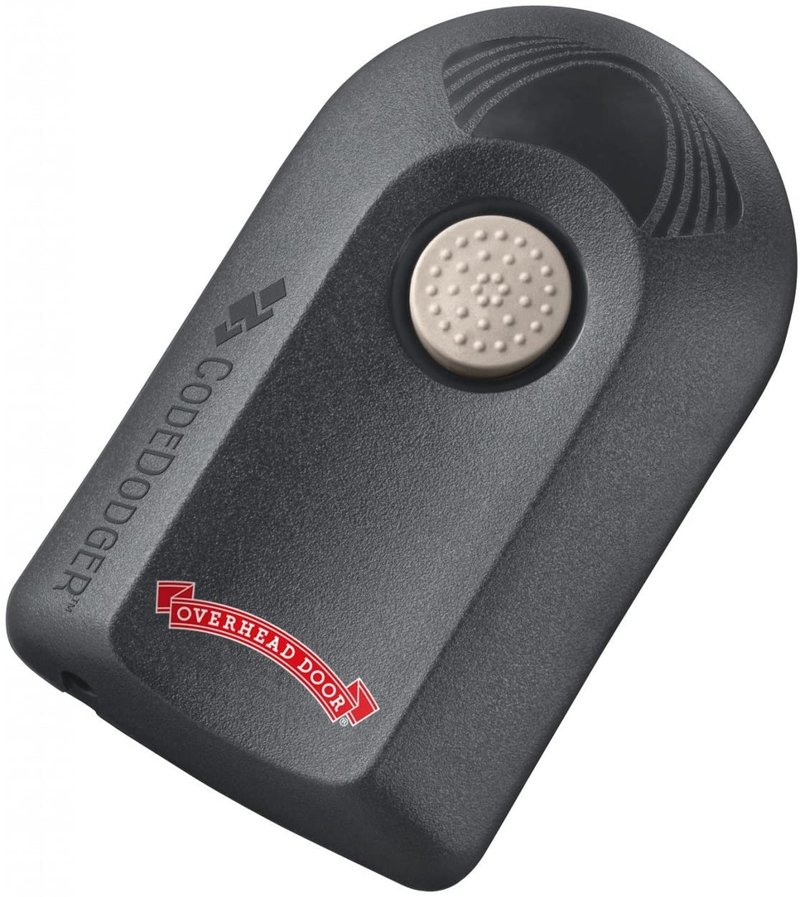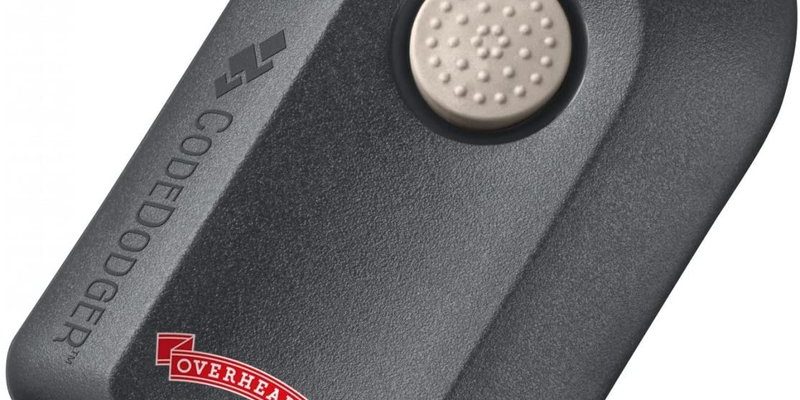
Overhead Door is a well-known name in the garage door world—kind of like Kleenex for tissues. Their remotes look simple, but there’s a lot of tech hidden inside. Universal remotes, on the other hand, promise one-remote-to-rule-them-all simplicity. The big question: Does an Overhead Door garage remote actually work with universal openers? Or is there a secret handshake required? Let’s break it down, piece by piece, so you know what to expect before buying, syncing, or troubleshooting.
Understanding Overhead Door Garage Remotes: What Makes Them Unique?
First, let’s clear up the basics. An Overhead Door garage remote is designed to work specifically with Overhead Door garage door openers. Kind of like how your TV remote usually only talks to your TV—unless you have one of those universal remotes that claims to do it all. The big deal here is the signal language they speak. Overhead Door remotes use specific *codes* and *frequencies* that pair directly with their branded openers.
Here’s the thing: Not all garage door remotes operate on the same frequency. Overhead Door models might use 315MHz, 390MHz, or sometimes both (dual frequency). Why does this matter? Because if your remote and opener aren’t on the same channel, so to speak, they can’t communicate. Many Overhead Door systems also use a unique rolling code technology, which changes the signal every time you press the button. This makes it tough for universal remotes to copy or “spoof” the signal unless they’re designed to handle rolling codes from this brand.
You might be wondering why this is so complicated. It’s all about security (no one wants random Open Sesame moments from the neighbor’s remote) and compatibility. Each brand tries to keep its own little tech ecosystem, which can make using a universal opener a little tricky with some Overhead Door remotes.
How Universal Garage Door Openers Work (And Their Limitations)
Universal garage door openers are the multitools of the remote world. They’re marketed as a fix-all: lost your original remote? Just grab a universal one, program it, and you’re back in business. But honestly, it’s not always that simple—especially with brands like Overhead Door.
Universal remotes work by copying or syncing to the frequency and code used by your garage door system. Most will have a list on the packaging or in the manual showing which brands and model years they officially support. If Overhead Door is on that list, you’re in luck… at least in theory. The challenge comes when manufacturers update their security, change radio frequencies, or add proprietary code formats that universal remotes don’t recognize.
It’s a bit like trying to use a universal charger with every phone, only to find out certain models need a special adapter. The universal remote might work with basic Overhead Door models (often the older ones), but newer openers with high-security rolling codes or dual-frequency tech may simply ignore the universal remote’s signal altogether.
So, while universal openers aim to simplify things, there’s no guarantee they’ll cover every Overhead Door system—especially those made in the past decade.
Pairing an Overhead Door Remote With a Universal Opener: Step-by-Step Guide
Let me explain how pairing generally works, so you can see where there may be hiccups. Say you’ve got a universal remote and want to pair it with an Overhead Door opener. The process looks like this:
- Check Compatibility: Look closely at both your remote and opener. Find the model numbers and check if the universal remote claims to support them—either in the package insert or on the manufacturer’s website.
- Find the Learn Button: Most Overhead Door openers have a “Learn” or “Program” button (often red, purple, or yellow) near the antenna wire or on the back of the opener. This button puts your system into pairing mode.
- Put the Universal Remote in Programming Mode: Hold the correct button combo (usually explained in the universal remote manual) until the LED flashes, signaling readiness.
- Sync the Codes: Press the button on the universal remote you want to program. Then, hit the “Learn” button on the Overhead Door opener. The opener’s light may blink or click, showing it received the code.
- Test the Connection: Press the programmed remote button. If the door moves—you win! If not, you may need to repeat or troubleshoot.
Here’s where things go sideways: if the opener uses a newer rolling code format or a frequency not supported by the universal remote, pairing won’t work. No blinking lights. No movement. Just frustration. That’s why checking compatibility up front saves a ton of time (and groaning).
Common Problems When Using Universal Remotes With Overhead Door Openers
Honestly, this is where a lot of people get stuck. Even after following the manual to the letter, they’ll press the button and… nothing. Compatibility issues are the number-one culprit. Newer Overhead Door openers, especially those using advanced rolling code tech or dual frequencies, are intentionally hard to copy. Universal remotes made before these newer models hit the market often just aren’t equipped to pair.
Another big snag? Programming mistakes. It’s easier than you’d think to get the timing wrong or press the wrong button combo. Sometimes people mistake a “Learn” button for a simple reset button, wiping all remotes from the memory in the process. Suddenly, you’re reprogramming every clicker in the house. If you’re not sure which button is which, check the opener’s manual or look for a model number to search online for a diagram.
Battery issues can also sneak up on you. A weak battery in either the remote or the opener means not enough juice to send or receive a strong code. Before you panic, pop in fresh batteries.
If all else fails, remember: brand-specific tech support can sometimes spot a compatibility issue faster than you can. Don’t be afraid to reach out—it might save your Saturday afternoon.
The Difference Between Universal and Overhead Door Brand Remotes
Here’s the reality: while universal remotes offer convenience, brand-name Overhead Door remotes are tailor-made for the system you have. They use the exact frequency, code format, and security protocol required by your opener. That means less fiddling and, usually, more reliable day-to-day use.
Universal remotes are a jack-of-all-trades (but, as the saying goes, master of none). If you move a lot, have multiple garage door brands, or just want a spare, a universal option makes sense—if your system can handle it. But if you’re dealing with a newer Overhead Door opener, or you want to guarantee hassle-free connection, going with the brand remote is often the smarter move.
There’s also the question of future-proofing. Overhead Door updates its technology pretty regularly to stay ahead of security breaches. That shiny universal remote you bought a few years ago might not recognize a code system your new opener uses. The official remote, however, will almost always work—unless the opener itself is faulty.
How to Troubleshoot Garage Door Remote Pairing Issues
Let’s say you’ve gone through the pairing steps and hit a wall (figuratively, please). Here’s a slow, methodical troubleshooting process:
- Double-check Compatibility: Don’t just assume—verify that your universal remote and Overhead Door opener can actually talk. Older universal remotes may not handle newer rolling codes.
- Replace Batteries: Weak batteries are sneaky. Swap them out in both the remote and the opener’s backup battery if you have one.
- Clear Remote Memory: Sometimes, your opener’s memory is full and can’t pair new remotes. Look up instructions for clearing old codes—it usually involves holding the Learn button for 10 seconds.
- Reset the Remote: Follow the universal remote’s manual to reset it to factory settings, then start programming from scratch.
- Interference Check: WiFi routers, LED lights, or even neighbors’ openers can cause interference. Try pairing with everything else turned off if possible, just to test.
Try not to rush. Most systems have a time window—if you move too slowly or quickly between steps, the opener may cancel programming mode. Take a breath and try again.
When to Choose a Universal Opener (And When Not To)
You might be tempted to grab a universal remote for the price or the convenience. And sometimes, that’s absolutely the right call. If you have multiple brands of openers at home, or you need a quick, cheap backup for guests or deliveries, a universal remote can be super handy. Look for models that clearly list compatibility with Overhead Door on the package or website.
But here’s when universal isn’t your best bet: if your Overhead Door opener is new (say, made in the past five years), or uses fancy security features like CodeDodger 2 or dual-band frequency. In those cases, the universal remote may simply not have the software or hardware needed to pair with your system. You’re left with a neat-looking remote that won’t budge your garage.
There’s also peace of mind to consider. If you rely on your garage for home security—or you have kids who always seem to lose remotes—sticking with the official brand ensures every remote is backed by tech support, parts, and updates.
Resetting and Syncing: Why It Matters for Security and Convenience
Resetting and syncing remotes isn’t just a technical chore; it’s a big part of keeping your garage (and, by extension, your home) safe. When you sync a new remote, the opener’s memory often wipes out old, unused codes. That means lost or stolen remotes can’t be used by anyone else—a pretty comforting thought.
If you’ve just moved in, or if your remote’s ever been missing for a while, doing a full-code reset and then re-syncing all devices is smart. Overhead Door systems typically let you do this via the “Learn” button. Just know that after a reset, every current remote will need to be reprogrammed. It’s a small price for peace of mind.
With universal remotes, the reset and syncing process can be less straightforward, since they’re designed to work with many brands. Always read the manual (yes, the actual manual), and if the pairing process seems off, check for firmware updates or compatibility notes on the manufacturer’s website.
Final Thoughts: What Works Best for Overhead Door Garage Openers?
When it comes to the question—does an Overhead Door garage remote work with universal openers?—the answer is, “sometimes, but not always.” If you’re using a universal remote with an older Overhead Door system, you’re likely in luck. But move into recent models, and compatibility becomes hit or miss. There’s a reason official remotes exist: they’re built for the job, with no guesswork involved.
Take the time to check your opener’s model and year. If in doubt, reaching for the original Overhead Door remote saves headaches in the long run. Universal openers have their place in the toolbox, but don’t expect them to magically solve every compatibility issue. Whatever path you choose, a little patience and attention to detail make all the difference—so you’re not left standing in the driveway, remote in hand, wondering what went wrong.
